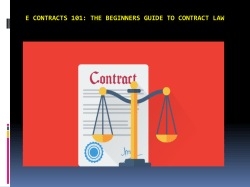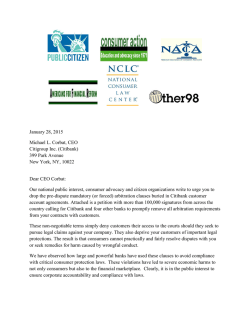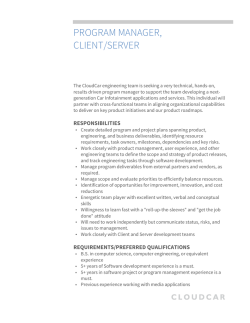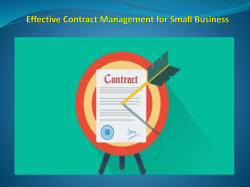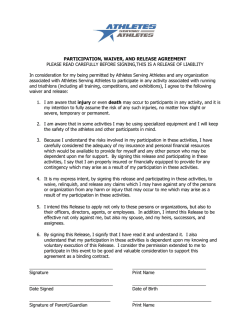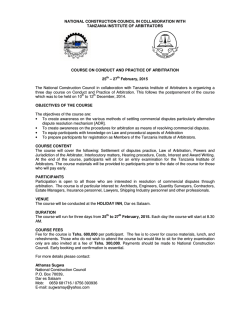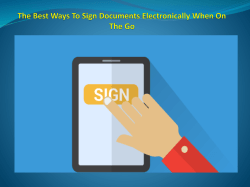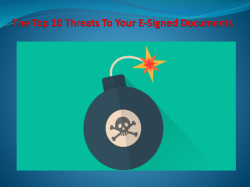
Contract Writing For Dummies
Writing a contract and agreeing to it can be one of the biggest challenges of your working relationship with a client. The contract has to reflect exactly what it is you both expect as an outcome from your relationship. Agreeing on a contract with a client is almost as important as choosing the right partner to marry. If you don’t get it right, you could end up in court and out of pocket – the result being a lost client and a damaged ego. So getting the contract, spot on, to reflect your two-way relationship, as well as the expectations and outcomes, is vital. I’ve done contract writing the right way, and I’ve done it the wrong way. I learned a hard lesson when contracts that I thought were concrete turned out to be not worth the paper they were written on. And conversely, I’ve also found out that contracts I had relied on had additional clauses entered without my knowledge that I had to dispute in court. In this guide, I’ll go through the various steps to help you think through the process of contract writing, agreement, and signing, with a bit of contract law thrown in for good measure. Consideration one: Preliminary discussions before contract writing First things first, before even thinking about writing a contract you need to have a baseline from which to work. Talk through with your client what your expectations are. Ideally, capture this in a series of emails or messages as you can refer back to during contract writing (or later if needs be). Consideration two: Know how contract law will affect you We’ve got a blog post which goes over in more detail some contract law so you can avoid some of the pitfalls. For example, are the parties entering into the contract legal entities? In the U.S. this means, amongst other things, you must be over 18, and not bankrupt to legally enter into a contract. Consideration three: Writing a contract – using a template If you are creating a standard contract, such as a Non-Disclosure Agreement (NDA), you may well already have a template. I’ve got an example here of an NDA I’ve used in a previous business (shown below). I used the same sort of format across a number of companies. However, I did have a lawyer help create it, and advise on important clauses. Signature platforms like ApproveMe allow you to store contract templates for reuse. Templates are a very useful tool to save time, and reduce mistakes. DOWNLOAD NDA DOCUMENT Consideration four: Contract considerations Considerations are the things that both parties agree to. So, for example, this could be the payment amount and terms. Payment, in particular, seems to be a sticking point in contracts, so it is best to get to get payment terms totally firmed up and very clearly set out. In the case of an NDA, considerations are fairly straightforward. In the case of the NDA below, pretty much everything under the ‘It is agreed’ section, covers the considerations, for example: “keep in confidence any Confidential Information disclosed to it by the other party and will not disclose that Confidential Information to any person…” In a contract that requires deliverables, such as a set of wireframes for a website, you would set out exactly what the deliverables were when they would be delivered (give exact dates, do not be vague) and what the cost of each deliverable was. In other words, don’t leave anything at all open for discussion, make it very plain so there can be no misunderstanding about what the contract expectations are. In the world of contract writing, vagaries are our enemy. CLICK TO TWEET Consideration five: Keeping it confidential Our contract example is an NDA which is by definition about confidentiality. However, even contracts where you are doing an exchange of deliverables/money, you should still consider adding a confidentiality clause into it, to make sure that any ideas or proprietary information that either of you share, is protected. Consideration six: Get out of jail free card An important option to build into a contract is the idea of termination. Having a termination clause in a contract means that either party, with a given reason, can cancel the contract. I’ve had contracts where this clause has been a simple: “if either party wishes to terminate the contract, for whatever reason, they can do so with 3 months notice”. A similar clause might go something like: “[Company name] may terminate this Agreement at any time by providing the client [name] with [x weeks / months] written notice, without any further obligation or compensation.” However, you should check out local state laws that might impact on your use of termination clauses in your area. Consideration seven: Mediation You and your client may be completely happy bunnies at the time of agreeing your contract, but you know what relationships are like, they can turn sour. In this case, having a clause in the contract which provides a solution to a disagreement through arbitration is useful. Arbitration or the alternative, mediation, is voluntary and allows both parties to air their issues with a neutral third party. It is a bit like marriage guidance, but in the case of arbitration, the arbitrator will make a decision to resolve the issue after hearing each side’s views. Consideration eight: Professional advice When drawing up a contract for the first time, is a good idea to use a lawyer. It might seem like a lot of money, but it’s cheaper than a court case – believe me. Work with the lawyer to get a boilerplate contract that you can use as a template for other clients. This way you can use it in an e-signature platform like ApproveMe as part of a workflow process to create, agree, sign, and complete a contract. Consideration nine: Do it online One of the things that holds up a contract signing process is the time it takes to distribute the contract and collect the signatures, especially if there are multiple signatures needed. If you use an e-signature platform that complies with digital signature laws, like ESIGN, and that has built in workflow and audit capability, you can get a contract agreed, signed, sealed, and delivered without moving from your desk. ApproveMe has all of the features needed to make sure that once you have an agreed contract, that abides by contract law, that the signing of the contract is achieved easily and seamlessly. Check out the ApproveMe WordPress plugin which makes signing agreed contracts easy and lawful. Article Resource: https://www.approveme.com/e-signature/contract-writing-fordummies/
© Copyright 2025

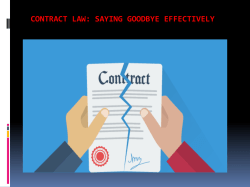
![Download the PDF [178 KB]](http://s2.esdocs.com/store/data/000499344_1-7f4373c1afe39f332b14a8d11d1a7c7f-250x500.png)
